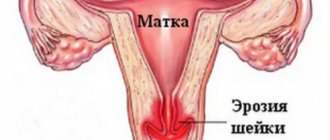Taking drugs for miscarriage
Medical abortion takes place in two stages:
- fetal development stops;
- embryo detachment occurs.
The uterus, from which the fertilized egg has detached, is under stress. To speed up tissue restoration, it is advisable to drink contractile drugs, for example, tincture of water pepper. During embryo detachment, hospitalization and observation of the process and the patient’s well-being by the attending doctor are recommended.
Visually, the embryo at the stage of development up to 6 weeks resembles a blood clot or a pink lump. Gynecologists have doubts about how safe this type of abortion is, because it is caused by a remarkable volume of hormonal agents, which completely disrupts the woman’s hormonal levels. Restoring the correct balance of hormones is then extremely
difficult. Moreover, the number of endocrinologists in the field of gynecology is minimal.
Why does bleeding occur from the anus when stool without pain?
The essence of medical abortion
The essence of medical abortion is the use of special medications that have an abortifacient effect. To carry out a pharmacological abortion, the drugs Mifegin, Pencrafton, and also RU486 are used. All of these medications contain one active ingredient called Mifepristone. This is a hormonal drug that has an antiprogestive effect, as a result of which changes are observed in the hormonal background of a woman. In particular, the active substance mifepristone is a blocker of the female hormone progesterone, on which the further development and preservation of the fetus depends.
Medical abortion is performed exclusively under the supervision of a doctor. A woman should take 600 mcg of the drug at a time. Within 2 hours the patient has an abortion, that is, a spontaneous miscarriage. A woman should visit her gynecologist again 48 hours after a medical abortion.
Interesting: Why It’s Hard to Breathe During Pregnancy
How long does bleeding last during medical abortion?
It is common for blood to appear after taking abortifacient medications. Because pregnancy causes heavy blood flow, embryo rejection can cause heavy discharge. This is one of the complications of medical abortion. Ideally, bleeding should resemble menstruation in the first days of its appearance.
What hemostatic herbs can be used for uterine bleeding
The bleeding continues for two or three days. The clots differ in the following properties:
- acquire a dark burgundy or brown tint;
- Every day there should be less and less discharge.
The duration of bloody discharge can be up to one month if a woman chooses abortion with medication late in pregnancy. As for restoring the monthly cycle, if the body is young, the hormonal levels should improve within the next six months.
What to watch out for
A woman should be wary of bleeding after a medical termination of an intensive pregnancy. On days 5-7, the blood should turn brown, which means that the discharge is coming to its logical conclusion.
Doctors call dangerous manifestations of the inflammatory process and incomplete disposal of the fertilized egg:
- increase in the patient's body temperature;
- dizziness, unusual weakness, loss of coordination;
- loss of consciousness;
- pain in the lower abdomen.
Causes of discharge after abortion
The essence of abortion is to remove the fertilized egg attached to the wall of the uterus. A classic medical abortion is a process of careful curettage, which is why there is discharge after an abortion. Pain in the lower abdomen is also considered normal after surgery. In this case, the scarlet discharge should gradually give way to brown.
The second option of artificial termination of pregnancy, carried out using hormonal therapy, is also accompanied by bleeding. The color of the discharge in this case changes from red to brown. Bleeding after a medical abortion lasts much longer than after a medical abortion.
A mini-abortion is accompanied by minor and short-term discharge, since in the early stages of pregnancy the fertilized egg does not yet have time to firmly attach to the uterus.
How to avoid complications
Large blood loss is always detrimental to a person; along with the blood, a woman loses strength, because along with this, kidney and heart failure occur.
It is impossible to predict how a medical abortion will end. The body may react to the drug by not taking it in case of individual intolerance. To prevent this from happening, the doctor should choose the best remedy with a minimum list of side effects and contraindications, taking into account the patient’s weight and chronic diseases. Consequences that are observed after medical abortion:
- If the embryo is up to 6 weeks old, no consequences are observed in 97% of patients. The rest are sent for vacuum suction and curettage.
- If the gestational sac is between 7 and 11 weeks old, medication abortion is not recommended. This is due to the high percentage of intense bleeding occurring within 4 days; after discharge, it lasts for another 4 days.
- At a period of 12 weeks or more, it is better to terminate the pregnancy surgically, as there is too high a chance that the embryo will not come out completely.
Risk of bleeding after medical abortion
The World Health Organization considers medical abortion to be the safest, and it is this method that is recommended by obstetricians and gynecologists around the world if the issue of the need to terminate the pregnancy has already been decided and all that remains is to choose a method. However, the definition of “safest” does not mean a complete absence of harm to health - such a serious hormonal intervention cannot pass without leaving a trace and often leaves behind terrible complications. For example, abnormal bleeding after a medical abortion is common, which can be life-threatening.
In order to understand why such dangerous consequences can occur after taking pills, you need to imagine the mechanism of action of the drug used to carry out the pharmacotherapy. Mifepristone, which the woman takes at her doctor's appointment, is given to her in a dose of 600 mg. This dosage of the drug allows you to achieve the following effect - the uterus stops responding to the hormone progesterone, and it is the high content of this hormone during pregnancy that ensures the maintenance of fetal life, rich blood supply to the uterine lining (endometrium) and prevents its rejection. It is easy to imagine that eventually the vessels of the uterus, which carry blood to the fetus, collapse and the death of the fetus occurs. At the same time, the ability of the uterus to contract increases, and the fertilized egg is gradually brought out along with the sloughing endometrial layer. Bleeding after an abortion usually begins within 24 hours.
After 2 days, the woman visits the doctor again, who clarifies whether a miscarriage occurred or not, and whether the uterus has contracted sufficiently. If the uterus has not yet returned to its previous size, prostaglandins are prescribed - hormonal substances that stimulate the contractile activity of the uterus and allow the abortion to be completed. Discharge after a medical abortion may increase and become more painful while taking prostaglandins - this is a normal reaction. A woman may notice the moment of miscarriage - a light pink, dense formation about 2 cm in size appears from the genital tract. After this, the intensity of the discharge usually decreases.
How is medical abortion performed?
Before talking about how many days the discharge lasts after termination of pregnancy, it is necessary to first tell how this procedure is carried out. In its implementation, special drugs are used that block the synthesis of progesterone (the hormone responsible for the normal course of gestation) and reduce its level in the body to a minimum. As a result of this, the following happens:
- Stopping the development of the embryo.
- Detachment of the fertilized egg.
After a medical abortion, many doctors prescribe pills to their patients that speed up the recovery of the uterus, which have a contracting effect. They enhance the contraction of the smooth muscles of the organ, thus facilitating its complete cleansing of the fertilized egg.
How long does it take to recover after a medical abortion?
It is difficult to say exactly how quickly recovery will take place after a medical termination of pregnancy and how much bleeding will occur during the rehabilitation period. After all, each body is individual and its complete recovery takes different times for everyone.
Types and characteristics of discharge during embryo implantation
The appearance of blood clots on the first day after medical termination of pregnancy is considered normal. Their occurrence is caused by the release of the fertilized egg. And the opening of bleeding during this period is observed due to the fact that after the onset of gestation, the pelvic organs are actively supplied with blood and after its interruption it begins to come out.
If a medical abortion was carried out correctly, then copious bleeding is not observed for long, since essentially no mechanical damage to the mucous membranes of the uterus and its vessels occurred, therefore, no open wounds are formed in the organ.
And speaking about how recovery goes after a medical abortion and how many days bleeding can be observed, it should be noted that in the absence of complications, the woman’s condition should normalize after 2-3 days. After this time, the blood begins to be released much less. It acquires a brown tint, which signals a good level of blood clotting and the successful completion of the recovery period.
The duration of brown discharge varies among women. But, as a rule, daubing in this case is observed for 5–10 days, no more. After a woman stops smearing from the vagina, after some time another menstruation may occur, which is also quite natural, since the body undergoes serious hormonal shocks, and the occurrence of menstruation several times a month does not indicate the development of pathological processes.
It should be noted that the longer the gestational age at which the medical abortion was performed, the longer the recovery period will last. Normalization of hormonal levels takes a long time - up to 6 months. And at this moment, shifts in the menstrual cycle and some changes in the nature of the blood released during menstruation may be observed.
But do not forget that cycle disruption is also characteristic of various pathologies, and therefore, if menstruation occurs very often and lasts longer than usual, you must definitely visit a doctor and have an ultrasound done to make sure there are no complications.
How long does discharge last after an abortion?
As you know, the reaction of a woman’s body to termination of pregnancy in almost all cases is quite acute. The duration of discharge after an abortion is influenced by the quality of the operation performed, the presence or absence of postoperative complications, as well as the characteristics of the female body.
For a classic abortion, discharge for 7-10 days is considered normal. After a medical abortion, spotting may continue for up to 30 days, that is, until the menstrual cycle is restored.
In what cases is it necessary to consult a doctor?
After a medical abortion has been performed, the woman is scheduled for a repeat ultrasound examination 5–7 days after the procedure. However, in some situations, complications that arise make themselves felt much earlier than the ultrasound is performed, which requires immediate consultation with a doctor, and sometimes emergency hospitalization of the patient.
Precursors of white thick and creamy discharge
If after a medical abortion, after 2-3 days a woman continues to bleed profusely, a bloody clot is periodically released from the vagina, an unpleasant odor appears or the stomach begins to pull, this is no longer considered normal. All these signs indicate the presence of complications that require immediate treatment.
The most dangerous are bloody discharges accompanied by:
- An increase in temperature above 38 degrees.
- Dizziness.
- Reduced blood pressure.
- Severe weakness.
- Pallor of the skin.
The presence of all these symptoms is a sign of uterine bleeding. Its distinctive feature is that when it opens, the discharge retains its scarlet color for a long time (normally, within a day it should become darker) and they are released in very large quantities, which is why a woman has to change sanitary pads more often 1 times every 1.5–2 hours.
If the bleeding lasts more than 12 hours, the body loses a lot of blood, which causes a decrease in the amount of nutrients supplied to its tissues, including oxygen. Against the background of oxygen starvation, the functionality of cells is disrupted and most of them die, which entails the occurrence of irreversible processes in the body. Therefore, it is so important to promptly notice the opening of uterine bleeding and immediately call an ambulance.
Important! To stop bleeding, doctors administer a hemostatic drug intravenously. This is carried out only in a hospital setting, since the body’s reaction to it can be unpredictable.
If a woman already has scanty periods on the 3rd or 4th day, but at the same time there are blood clots in them, you should not hesitate to consult a doctor either. The appearance of bloody clots only during the first 24 hours after an abortion is considered normal; then their occurrence has nothing to do with the norm.
As a rule, blood clots occur due to incomplete release of the fertilized egg from the uterine cavity, resulting in the need for surgical cleansing of the organ (curettage). After all, if this is not done, the remains of the fertilized egg in the uterine cavity will begin to rot, which will lead to not only severe inflammation, but also the development of necrotic processes, which may be followed by an abscess and sepsis.
No less dangerous is the presence of light pink discharge, which contains streaks of blood. Their occurrence indicates a disruption in the flow of blood from the uterus due to obstruction of the cervix. Often this condition is observed against the background of the formation of a blood clot in the cervix and it should also be removed immediately, since it causes stagnation in the uterine cavity, which leads to severe inflammation and the development of purulent processes.
Post-abortion condition: causes of bleeding
A woman’s condition after any abortion is accompanied by bleeding and may stop within the first week. This happens because during abortion, the integrity of the vessels and membranes is disrupted, and bleeding occurs. This is a physiological condition during abortion.
Depending on the accompanying factors, bloody discharge may be normal after this procedure or may be profuse, which is a pathology of the condition. With such indicators, immediate consultation with a gynecologist is required.
A week after the rejection of the fetus, when the stomach hurts and blood-colored vaginal discharge occurs, it is quite acceptable. When the shade turns pink, the recovery process is within normal limits.
Often women do not understand the reasons for the appearance of discharge after an abortion, especially a medical one. Indeed, in the first case, there is no surgical intervention or medical manipulation. The fact is that with the onset and course of pregnancy, the uterus grows and increases in size several times as the fetus develops.
In rare cases, after expulsion of the fetus, white discharge from the mammary gland is noticeable without pregnancy. With the onset of pregnancy, the level of the hormone prolactin increases in the female body, which is responsible for milk production and prepares the mammary glands for the upcoming lactation. After an abortion, they remain enlarged for some time and colostrum may be released. This is mainly observed after an early abortion.
If there is no discharge the next day after an abortion, this usually means that the procedure was not effective and the pregnancy was not permanently terminated. Statistics show 7% of cases of this phenomenon.
If we are talking about a failed pharmaceutical abortion, then it is completed by vacuum aspiration or cleaning. A mini-abortion is completed by curettage.
However, do not panic ahead of time, sometimes the discharge makes itself felt after 2 days. At first it may be a slight pink or brown discharge, but with each passing hour its intensity increases. If scanty discharge continues for more than 3-4 days, then the uterus is not cleansed and you need to inform your doctor about this.
The intensity of the blood released may be insignificant during an early abortion (2 weeks), which does not always indicate pathology.
Heavy discharge
Excessively abundant discharge can also indicate incomplete interruption. In this case, the uterus tries intensively to reject the remains of the fetus, resulting in a large amount of bloody or dark brown discharge and clots.
It happens that dead cells from the remains of the embryo provoke sepsis of nearby tissues. Heavy bleeding is accompanied by purulent mucus, an unpleasant putrid odor, nagging pain in the lower abdomen, radiating to the side and back, increased temperature and deterioration of the general condition. If such symptoms are detected, urgent hospitalization is necessary to preserve the health and life of the woman.
Inflammatory processes have similar signs. The open wound that is the uterus after any abortion is at risk of attack from outside pathogens. The chances of infection and inflammation increase due to reduced immunity and stress experienced by the body. They are characterized by painful bleeding and spasms, fever, chills, and malaise. Inflammations require immediate treatment, as they sometimes affect nearby organs.
Features of various methods of abortion
Depending on the stage of pregnancy, abortion is done in one of three ways: medication (4-7 weeks), vacuum (up to 6-7) or surgical (7 to 12 weeks inclusive). The longer the period, the greater the likelihood of complications (incomplete removal of the fertilized egg, tissue damage, the occurrence of inflammatory processes).
Medical abortion. A steroid drug is used to artificially reduce the level of progesterone, which is necessary for the implantation of the embryo in the uterus. The woman then takes another drug that increases uterine contractions. Detachment of the fertilized egg occurs and its spontaneous removal.
Vacuum abortion is the removal of the fertilized egg from the uterus along with the endometrium using a vacuum device. Since this operation is performed on a short term, it is also called a mini-abortion.
Surgical abortion is performed by curettage of the uterus, removing the fertilized egg along with the nearest layers of the endometrium.
The most dangerous is abortion using the surgical curettage method. With a vacuum abortion, the risk of complications is much lower.
Video: Types of abortion and their features
What discharge after an abortion is considered normal?
In order to talk about normal discharge, it is necessary to recall that abortions are medicinal, vacuum and instrumental (surgical). These methods are different, therefore, the discharge after them differs in quantity and duration.
Concerned women often ask how long the discharge lasts after an abortion. Their duration depends not only on the method of termination of pregnancy, but also on its duration, as well as the individual characteristics of the woman’s body.
In a classic surgical abortion, the fertilized egg is scraped out instrumentally from the uterine cavity. The process is accompanied by pain and significant blood loss. Moreover, depending on the stage of pregnancy, the amount of discharge may be more or less. Usually their volume significantly exceeds normal discharge during menstruation. They last about 10 days. In the first days after an abortion, the discharge is scarlet in color, gradually its quantity decreases and it becomes dark, often brown.
After a medical abortion performed with hormonal drugs, the fetus is expelled from the uterus along with heavy bleeding. If a woman monitors her discharge, she may see a dense pink formation coming out, i.e. fertilized egg. The discharge may be copious for 2 days, then it becomes more and more scanty, turning into spotting, and it continues until the next menstruation.
Vacuum abortion occurs with less blood loss, and the discharge is short-term. This is explained by the fact that this method of abortion is used in the earliest stages, when the fertilized egg has not yet had time to fully implant into the uterine mucosa.
Considering all that has been said, we can say with complete confidence that there should be discharge after an abortion. But their character must be carefully monitored to avoid complications.
Pathological discharge. When to see a doctor
If brown discharge appears more than 10 days after the abortion, this may indicate the presence of cysts or polyps in the uterus. Small growths are not dangerous, but can cause pain in the lower abdomen or during sexual intercourse. A woman needs to undergo periodic gynecological examinations to monitor the condition of the uterus.
Brown discharge after an abortion can also be a sign of more serious diseases. If they appear before and after the first menstruation, this may indicate inflammation of the uterine mucosa (endometritis). Subsequently, such discharge appears in the middle of the cycles, even if they are regular. The discharge has an unpleasant, pungent odor. Inflammatory diseases of the genital organs must be eliminated. The sooner you start treatment, the fewer unpleasant consequences of abortion, miscarriage or ectopic pregnancy, in the future.
Complications after an abortion may appear on the 2-3rd day. A woman notices that the discharge has changed color or intensified. For example, abundant yellow mucus with a putrid odor appeared. This is a sure sign that an infection has entered the uterus and an inflammatory process has begun. The causative agents can be streptococci, staphylococci or Escherichia coli. Yellow foamy discharge with an unpleasant odor appears when infected with chlamydia or trichomonas (sources of sexually transmitted diseases).
In the case when, approximately on the 3-4th day, a woman develops abdominal pain, the temperature rises, and the discharge becomes purulent, she should quickly go to the hospital to have an ultrasound of her pelvic organs and prescribed antibiotic treatment.
You should consult a doctor urgently in the following cases:
- there are clear signs of uterine bleeding;
- the passage of large clots continues for more than 4 days;
- weakness increases, dizziness appears.
This condition is life-threatening and requires immediate hospitalization and determination of the cause of the bleeding. Surgery is possible.
If on day 1-2 the discharge is scanty and then stops altogether, this is most likely the result of muscle spasm in the area of the cervical canal. This condition is also very dangerous, since the blood does not leave the uterus, accumulates there and can fester. In this case, the cervical canal must be expanded artificially. Sometimes you have to do curettage.
Pathology of discharge after abortion
There are cases when women who have had an abortion suddenly stop bleeding. Unfortunately this is not the best indicator. During discharge, all remaining particles from the fetus leave the uterine cavity. If the discharge stops within 3-4 days, then a spasm of the cervix may have occurred and a large amount of blood accumulates inside. As a result, sepsis may occur. It is necessary to urgently consult a doctor.
Heavy bleeding also requires urgent medical intervention. It occurs due to the fact that fetal particles remain in the body of the uterus. This condition requires emergency medical care - curettage of the uterine cavity.
If we talk about what kind of discharge after an abortion is pathological, then it must be said that a change in the color and smell of the discharge often indicates the development of an infectious-inflammatory process in the uterine cavity, which sometimes requires quite intensive and serious treatment.
Discharge after vacuum abortion
Although this procedure has its advantages (the use of metal dilators that injure the cervix is not required, local anesthesia is used), complications are also possible. Bloody discharge after such an abortion appears within 3-4 days. If they look like regular periods, then there is no need to worry. At first, they may contain clots - remnants of the fertilized egg and epithelium, then the discharge becomes more homogeneous, turns pale, and becomes normal.
After about 1 month, normal periods come. Deviations in the onset of menstruation are associated with the individual characteristics of the body (depending on the duration of the cycle, the state of health and the woman’s nervous system). Most often, the first cycles occur irregularly, as the body needs time to eliminate hormonal imbalance.
Full restoration of the nature of menstruation after such an abortion occurs after 3-4 months in women who have given birth previously, and in women who have not given birth, the recovery process may be even greater.
Warning: During this period, it is imperative to use contraceptives, since due to the irregularity of the cycle, it is impossible to predict the timing of possible conception.
What discharge after an abortion is considered normal?
After an abortion, the risk of infection is quite high. Discharge of a certain nature can signal the onset of an inflammatory process. Normally, after an abortion there should be discharge without a foul odor. If they become yellow and have an unpleasant odor, you should immediately consult a doctor. In this case, timely treatment is very important, because chronic infection is much more difficult to cope with.
Particular attention to the nature of the discharge should be paid 3-4 days after termination of pregnancy. It is during this period that complications most often arise. Infection after an abortion can hardly be caused by incorrect actions of doctors, because all procedures are carried out only with sterile instruments. The fact is that after the operation, the cervical canal remains dilated for some time, so infection can easily penetrate into the uterine cavity.
Another reason to immediately consult a doctor is the presence of impurities in the discharge after an abortion. In this case, it is recommended to perform an ultrasound to check the quality of the operation performed.
Heavy bleeding after an abortion may result from incomplete removal of the fertilized egg. Heavy bleeding can be indicated if a woman uses two maxi pads for an hour. Increased bleeding may occur if remnants of the fertilized egg remain in the uterus and do not allow it to contract properly.
Discharge after medical termination of pregnancy
Bleeding after such an abortion is normal. It is an artificially induced menstruation. The exfoliated fertilized egg should come out with the blood. The shorter the pregnancy, the weaker the hormonal changes and the more the bleeding will resemble normal menstruation.
The onset of bleeding after taking the medicine is considered the beginning of the subsequent menstrual cycle. The onset of menstruation is expected in a month. If they do not come, then we can assume that the woman has become pregnant again, since conception is possible within 2 weeks after the abortion. If the discharge is too abundant and does not stop after 4 days, this is a pathology. This condition means that the fertilized egg has not been completely removed. Bleeding is also possible due to heart failure resulting from taking the drug, or due to vascular disorders.
Video: Discharge after drug intervention, possible complications
How many days after an abortion does there be discharge?
- type of termination of pregnancy;
- gestational age;
- the woman’s condition at the time of the manipulation;
- chronic diseases;
- gynecological pathologies;
- conditions where the manipulation is carried out and the qualifications of the doctor.
It should be noted that tissue rejection of various kinds after termination of pregnancy is the norm and a standard phenomenon. Gradually, the scarlet discharge should turn into brownish, then into daub and stop completely. However, it is important to observe how this happens. If the general and local condition worsens, consult a doctor immediately.
A less traumatic type of abortion is vacuum aspiration
. Immediately after the procedure, the discharge of blood and mucus will be more intense, gradually decreasing to the amount of fluid during normal menstruation. Normally, the duration is up to three days with complete cessation of spotting up to a week.
Through the use of specific drugs after medical abortion
severe bleeding occurs, causing rejection of the fertilized egg. Within 3-5 days, a tissue clot should come out, and then the intensity of bleeding decreases. Bloody discharge can last up to two weeks.
Surgical abortion
is the most traumatic for the female body and is accompanied by bloody discharge that turns brown for up to 10 days. Copious discharge occurs in the first days after surgery and gradually becomes scanty.
Normal discharge
After an abortion, the risk of infection always increases. Prolonged and heavy bleeding can easily contribute to the development of this process. It is important to monitor your own health and control the nature of your discharge.
An abortion can be considered successfully completed if after the termination the following phenomena are absent:
- prolonged heavy brown discharge;
- yellow color of discharge;
- bad smell;
- atypical impurities in blood clots.
On the first day after taking the abortifacient drug, embryonic development stops. On the second day it is rejected. The process of expulsion of the fertilized egg is accompanied by cramping pain, pulling sensations in the lower abdomen, and discharge with clots of bright red and scarlet hue.
Normal excretion is not accompanied by an unpleasant odor, heavy or scanty bleeding, and does not contain curdled components.
Rehabilitation period
The first day after termination of pregnancy, it is recommended to stay in a hospital under the supervision of specialists. It is important to ensure that the blood does not turn black or stop flowing altogether.
In general, the month after termination of pregnancy should be subject to certain restrictions:
- you cannot take a hot bath or visit saunas;
- avoid visiting the pool;
- limit or eliminate heavy lifting;
- Travel to the sea and exposure to the sun are not recommended;
- sports activities are limited until the body is completely restored;
- eliminate alcohol intake;
- do not use sanitary tampons;
- exclude sexual activity until the woman’s normal well-being has completely ceased.
The attending physician explains in detail why and how important it is to adhere to the restrictions. It is recommended to add vitamin-enriched foods to your diet to strengthen your body. No special diet required.
The first monthly cycle may be small and scanty, then it will recover completely. It is necessary to monitor the condition of the body and if dizziness, strange abdominal pain or other strange sensations occur, immediately contact your doctor or the nearest hospital or medical institution where the relevant specialists work.
If complications occur, the recovery period is quite long, so it is better to follow all recommendations after an abortion.
In general, the recovery period should take place without strong emotional and physical stress, under normal working conditions, and without recurrent bleeding or changes in the color and smell of the departments.
It is important to monitor how the post-abortion condition progresses so that complications do not arise. For the sake of maintaining health, it is necessary to comply with these rules:
- Stay in bed for at least a week.
- Avoid physical and emotional stress.
- Avoid drinking alcohol, taking a bath or hot shower, or visiting the sauna and swimming pool.
- Take all medications prescribed by your doctor.
- Wear natural, loose and comfortable underwear.
- Wash and change pads as often as possible.
- Use special intimate hygiene products without dyes or fragrances.
- Stop having sex for a while. Ideally, this is a 30-day period for curettage (for pharmaabortion - two weeks).
- Do not self-medicate if problems are detected.
Briefly about the main thing
Thus, bleeding due to artificial termination of pregnancy is a mandatory indicator that the manipulation was successful. If there is no discharge after an abortion, this indicates incomplete and incomplete extraction of the fetus. The intensity and nature of blood loss depend on the type of abortion and the period at which it was performed.
Duration of discharge
The duration of post-abortion excretion depends entirely on the individual characteristics of the body, the timing of the medical abortion, and compliance with all doctor’s recommendations. Bleeding usually continues for several weeks.
Many women note the persistence of light spotting bleeding for 30-40 days after an abortion. Bleeding may occur before your next period. The next period occurs on the 50th day after a medical abortion. Women may bleed differently. For some, everything ends within 12 days after the procedure.
Who should not have a medical abortion?
Medical abortion is absolutely contraindicated for women who:
- Acute chronic adrenal insufficiency;
- Long-term use of medications;
- Uterine fibroids of considerable size;
- Anticoagulants;
- Hemorrhagic disorders;
- Acute inflammatory processes of the female reproductive system, manifested in acute form;
- Ectopic pregnancy;
- Severe form of extragenital pathology.
After a medical abortion, a woman's next menstruation may begin with a significant delay. If we look at medical statistics, 50% of women experience menstruation 2 months after termination of pregnancy.
If, after a medical abortion, 2 large sanitary pads are completely soaked within one hour, then you should immediately consult a gynecologist that day. If heavy bleeding does not stop after 2 hours, this indicates the presence of a serious pathology.
If there is not only bloody, but also green, cheesy discharge, this means the onset of an infectious disease. A woman should be wary if such discharge is accompanied by pain in the lower abdomen and fever.
In some cases, a woman’s bleeding after an abortion may not differ from her menstruation, since the consistency is absolutely identical. The intensity of the bleeding is relatively moderate, the bleeding is absolutely painless, and in addition to this, the woman may suffer from pain in the lower abdomen. The duration of such bleeding is no more than 2 days from the date of the abortion. Minor spotting may continue to haunt a woman for several days. In some cases, this can be a week, a month, two or more. In most cases, spotting lasts until the next menstruation.
Nature of the discharge
Important criteria for assessing the normal completion of a pharmaceutical abortion are the color and volume of blood excretion. With heavy or scanty bleeding, the help of specialists is often required to preserve the functionality of the woman’s reproductive system, her health, even saving her life.
Discharge color
The mechanism of expulsion of the fertilized egg is determined by the type of drug chosen.
Normal discharge is characterized by the following features and stages of appearance:
- red or scarlet color (the first 1-6 days after taking the pills);
- brown spotting (following days after the cessation of scarlet discharge).
Brown discharge after an abortion can persist for 10-12 days. This is due to the continued drainage of clotted blood. The color of the discharge varies from dark to black. Long-term secretion of dark brown mucus may suggest the presence of polyps in the uterus or the development of endometriosis. The condition is almost always associated with severe nagging pain in the lower abdomen and long-lasting dark (even black) discharge.
Yellow discharge characterizes the onset of the inflammatory process of the internal genital organs. The causative agents are staphylococci, E. coli, chlamydia, streptococci, trichomoniasis. Yellow discharge is often accompanied by an unpleasant smell of rotting. If atypical discharge occurs, it is important to sample the discharge from the cervical canal for pathogenic media.
As the uterus recovers, the discharge resembles a light pink ichor. For doctors, such symptoms are a signal of successful recovery of the body.
Discharge with pus is a sign of a sexually transmitted disease, inflammation of the ovaries, fallopian tubes of a bacterial nature. As a rule, a woman was infected before the termination of an unwanted pregnancy. Later infection occurs as a result of non-compliance with hygiene standards, unprotected sexual intercourse against the background of bleeding.
Pink discharge with mucus without an unpleasant odor, itching or irritation is normal and does not require special treatment.
Discharge of a large volume of mucus with an unpleasant odor, foam and a green tint indicates a fungal or bacterial disease of the internal genital organs.
A curd-like white discharge is characteristic of thrush caused by the Candida fungus. The disease has characteristic symptoms: burning, severe itching, pain during urination and sexual intercourse.
Discharge volume
Heavy discharge after an abortion is normal. Usually, all fragments of the fertilized egg, the dead epithelial layer at the site of attachment, leave the uterine cavity in the first 5 days after termination of pregnancy. Spotting brown discharge is not abundant, reminiscent of the last days of the active phase of the menstrual cycle.
The severity of post-abortion bleeding is influenced by a number of factors:
- characteristics of the body (age, weight, blood clotting ability, degree of muscle contractions of the uterus);
- gestational age (from the day of conception to 7 weeks with medical abortion);
- gynecological and general clinical history;
- compliance with the technique of the procedure (dosage, phased administration of funds).
Immediately after rejection of the fertilized egg, the discharge is slightly more intense than during normal menstruation. My health does not suffer. After 5-10 days, the bleeding decreases, the discharge is spotting. Heavy bleeding is indicated by the use of more than 3-4 pads of maximum absorbency per day (classical, urological).
Pathological discharge
Despite the fact that medical abortion is considered the first in terms of safety, complications resulting from it occur no less. Although there is no exact definition of the duration of discharge, approximate characteristics of the norm indicate a period of up to 7 days. If heavy bleeding lasts more than 3 days, with severe stomach pain, the pad is completely saturated with blood in an hour or two, then the fetus is not completely rejected. In such a case, the uterine cavity is cleaned. Find out about the duration of discharge after cleaning the uterus in the article at the link.
If this symptom is accompanied by an increase in temperature, general malaise, nausea, discharge that has acquired a brown, yellow purulent color and smell, and the pain in the lower abdomen intensifies and radiates to the side or back, then we are talking about an inflammatory process. It can develop due to an incompletely removed dead embryo. Its dead particles provoked sepsis of adjacent tissues, which endangers not only the health, but also the life of the woman.
If you notice such symptoms, you should immediately consult a doctor.
Scanty discharge
The low intensity of the blood coming out also indicates a deviation from the norm, however, if we are talking about discharge after taking Mifepristone (the first tablet), then the sign most likely indicates the effect of the drug and the abortion that took place. A woman may notice intense mucous discharge, a yellowish secretion, or a slight spotting.
Endometriosis
Heavy and increasing bleeding with pain also occurs due to the development of endometriosis, because the internal tissue of the uterus, the endometrium, is primarily affected during fetal rejection.
Infections and bacteria
Hormonal changes and chemical attack with medabortion drugs place a huge burden on the body, significantly reducing its resistance, immunity and disabling metabolism. At this moment, when the genitals are an open wound, they are especially vulnerable to attack by pathogenic microorganisms. The balance of the microflora of the mucous membrane and vagina is disrupted. Opportunistic bacteria, which are found there in moderate quantities in everyday life, begin to dominate in its composition. When they received reinforcement from the outside, it is impossible to avoid the development of the inflammatory process against the background of bacteria, infections and viruses.
If the discharge has acquired an unpleasant smell of rotten meat or fish, has become yellow, gray, dirty white, and there is itching and burning in the vaginal mucosa, then there is a possibility of developing bacterial vaginosis. It often occurs during surgical and drug interventions in the reproductive system.
Thrush
Bloody and whitish mucus with a cheesy consistency and a sour milk smell indicates the development of Candidiasis. This fungal disease is sexually transmitted, and is also a consequence of stress on the body, including medication. Most often, thrush occurs due to the prescription of antibiotics.
Additional symptoms
Vaginal discharge of normal color and volume is an indicator of a successful medical abortion. The main symptom, in addition to discharge from the cervical canal, is moderate pain.
When the following signs are added, pathology often develops:
- unpleasant odor (mostly sour or putrid);
- irritation of the mucous membranes of the external and internal genital organs;
- severe burning, itching;
- redness of the genital organs, swelling;
- inflammation extending to the inner thighs;
- curdled white-red discharge;
- foamy yellow discharge (a sign of an infectious disease).
To manifest the disease, it is important to use all methods of differential diagnosis (instrumental, laboratory methods). Atypical discharge is almost always a signal of a disorder of various origins.
Yellow, brown and white discharge with or without odor
Sudden blood loss, brown mucus streaked with blood, increasing pain a few days after the abortion indicate a polyp, endometriosis, neoplasm or erosion of the cervix.
Yellow, white or gray discharge after an abortion, found interspersed with blood, indicates infectious inflammation. These include bacterial vaginosis. In addition to the fact that this disease is sexually transmitted, it can also be caused by a disruption of the microflora of the genital mucosa due to stress, medications and tissue injury. Discomfort in the form of itching and burning of the vagina, the unpleasant smell of rotten meat complements the symptoms of this pathology.
Fungal disease - Candidiasis - has similar symptoms. The difference is the curdled consistency and sour milk smell. Thrush often occurs in the post-abortion period due to taking antibiotics.
Yellow, odorless discharge during medical abortion after the first tablet does not pose a threat and indicates the onset of the drug’s effect.
When a woman’s stomach begins to hurt and the smell of her discharge changes, she needs to undergo an examination. This means that the infection could have entered through external means, or an existing chronic source of infection in the body has spread through the tissues, causing a deterioration in the condition.
The color of tissue fluids and its changes indicate the presence of an inflammatory process that requires treatment, which is prescribed only by a gynecologist. The white color of the tissues, turning into a curdled state, is an indicator of thrush. A yellow or brown color, sometimes with a greenish tint, characterizes the presence of an infection and you can find out what pathogen it is during examination.
The addition of various types of odor to the discharge is also an indicator of an infectious inflammatory process that requires immediate treatment to exclude more complex pathological conditions. It is necessary to undergo laboratory tests to identify the causative agent of the infection and prescribe adequate treatment.
What should you be wary of?
Medical abortion is performed only within the walls of a medical center under the supervision of specialists. This is necessary to prevent the first complications after an abortion: blood loss, lack of discharge, clouding of consciousness. Over the next few days, women need to monitor their own health condition and immediately consult a doctor if their health worsens.









